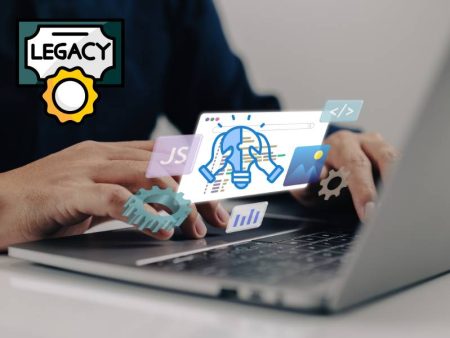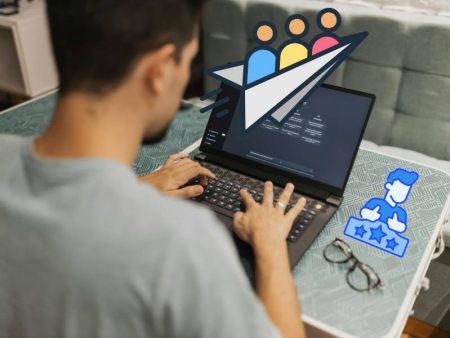Ever stared at a blank canvas—or worse, a scribbled napkin sketch—and thought, “If only I could see this in 10 seconds”?
You’re not alone. I used to wrestle with concept-to-visual burnouts. My ideas would pop up, great in theory…but translating them into tangible visuals? That often meant hours of design, sketching, or searching for stock images that never quite captured the vibe.
Enter AI. And no, not just the cute pastel aesthetic bots. The new wave of freeform, responsive tools is transforming how creatives prototype—from raw idea to polished draft—in minutes. Let’s unpack how this new frontier is changing everything, from inspiration habits to final outputs.
A Little Story: My Idea Block Breakthrough
Picture this: I’m on a Sunday afternoon slump. I’ve got a brand anthem in mind—a gritty, neon-lit cityscape, a lone figure, raindrops like slow dance trail. I fire up an Unfiltered AI Image Maker From Text. I type:
“A solitary figure in rain‑soaked neon alley, reflective puddles, cinematic depth.”
Thirty seconds later, boom—a moody concept sketch in front of me. Imperfect, sure, a bit glitchy—but exactly that spark I needed to refine script pacing, color choices, and framing before even thinking about a real shoot or sketch.
I leaned in. “Can we add a soft blue haze?” The tool obliged. I refined. In minutes, I’d gone from “in my head” to “on screen.” That leap? Game‑changing.
Why AI Prototyping Matters
Let’s break down why this matters—for me, for you, for anyone who’s ever been stuck between a concept and the whiteboard.
Speed without compromise
No commission, no photo shoot, no blank insert. Just idea → visual. Rapid iteration fuels creativity fast.
Exploration, not perfection
Your first AI pass is a sketch, not a final masterpiece. Want surreal? Raw? Painterly? The tool adapts.
Democratizing visuals
You’re not a designer? No problem. You don’t need hours in Photoshop. Just describe your idea, iterate, and voilà.
Feedback in real‑time
Need to tweak a vibe? Like a mood ring, your concept shifts instantly with new prompts.
Talking to the Tool: Natural Prompts in Action
You know how a brainstorm with a friend works:
Me: “I want something emotional. Like heartbreak on film.”
AI: renders
Me: “Cool, but add string dust particles, softer focus.”
AI: renders
Me: “Now push dusk lighting and lens flare.”
It feels like coaxing a human artist—just your typing, not a phone call.
Try starting loosely:
“Beach at dawn, empty swing set, pastel sky, faded nostalgia.”
Then adjust:
“Add footprint in the sand leading off,”
“Lens blur on horizon,”
“Desaturated color except swing set.”
Suddenly you’ve prototyped a short‑film still without a camera. It’s addictive. Honest human‑level collaboration.
When You Need Full Creative Freedom
Want to prototype bold ideas—abstract, moody, experimental—without worrying about censored visuals? For scenes pushing boundaries, tools like AI NSFW Image Generator No Sign Up Unlimited give full creative space. No blurred edges, no blocked prompts—just raw creative control.
That doesn’t mean you should hurt anyone’s feelings. But if your storyboard calls for vintage noir shadows or moody silhouettes, censorship filters get in the way. So yes, those uncensored tools break chains—for legitimate creative work.
Non‑linear Storytelling Through Visual Jumps
Here’s where it gets interesting. You know how stories don’t always flow linearly? Sometimes a flash‑forward or flashback scene helps define tone.
With AI, I’ll prototype visuals out-of-order:
- First, a future scene—neon club, roaring synthwave
- Then, a childhood memory—rustic cabin, warm glow
- Then, the protagonist’s reflect‑moment—mirror image, cracked glass
Individually, these visuals help me shape pacing, sound cues, mood. I compose them like a visual proof of concept. It reads like a moodboard, but a powerful, high‑fidelity one.
Iteration: The heart of prototyping
Most creatives iterate 5–10 times before locking in a look. With AI, iteration is fast. I run galleries, choose my top 3, highlight what works, re-prompt:
“I like image 2 but with deeper shadows and richer purple tones.”
AI’s like an intern who actually listened to your feedback. We refine until the prototype nails the creative brief—way faster than Photoshop layers or mood‑board curation.
Practical Tip: Prompt Templates
After dozens of sessions, I started saving prompt templates in my notes:
“A [subject] in [setting], cinematic lighting, moody color palette, medium depth of field, pastel neon glows.”
Then I just swap out the variables: subject, setting, color, vibe. You build a fast prototyping foundation, one that feels consistent across moods.
Balancing Human Imperfections and AI Precision
A crisp AI render can feel a little too perfect… so I sometimes itch to“break it.”
“Add film grain.”
“Make colors bleed at edges.”
“Soft vignette.”
These prompts add human imperfections—scratches, overexposure, blurry edges—giving the concept framing that feels… lived in. It’s artinaesthetic, not CGI‑cold.
That emotional nuance makes all the difference.
Collaborative Prototyping
I brought AI prototypes into sessions with writers and art directors. I project the images, then scribble notes on whiteboard:
- “Panel 3: swap neon blue for mustard yellow.”
- “Scene 5: add beat‑down posters in background.”
We’re riffing live—no printouts, no downloads. AI updates while they speak. That’s creative flow.
Ethical & Licensing Considerations
One caveat: Always choose responsibly-sourced AI tools and follow their terms—especially if your visuals go public or commercial. I never request copies of trademarked logos, celebrities, or copyrighted textures.
Also, I never pass off AI prototypes as final art—it’s a plaything, a sketch. I disclose internally: “Hey, these are AI‑generated drafts.” That transparency matters.
Scaling Up: Series Prototyping for Campaigns
I recently did a 6‑scene ad storyboard:
- City street
- Office interior
- Rooftop at dusk
- Parking lot car moment
- Bedroom reflections
- Sunrise epilogue
Same prompt template, swapped subject & setting. Instant consistency across the narrative. I use those in pitch decks and story outlines—and clients get it immediately.
My Emotional Take
There’s something thrilling about seeing your concept echoed back in visual form before committing resources. It’s like whispering to the world—*“Here’s what I imagine”—*and hearing immediate resonance.
It helps with doubt, the imposter syndrome, the fear of “Is this even visual?” With AI, you see “yes.” That validation fuels creativity.
Troubleshooting Common Glide Bumps
- Over‑stylized noise? Add “ultra‑clean” or “soft focus” to prompt.
- Wrong color vibe? Specify hex codes or color words: “warm amber, cooler cyan.”
- Composition issues? Use “center composition,” “rule of thirds,” “off‑axis view.”
- Wrong subject detail? Be more literal: “Make it a Tesla Model 3, not generic car.”
Every bump becomes a teachable moment—creative restraint actually grows skills.
Tools vs Traditional Sketching
I used to jot thumbnails on paper—fun, tactile—but non‑shareable. Now I can share polished visual drafts in Slack threads, storyboards, pitch decks.
That doesn’t mean I abandoned sketching: paper notes still come first. Then AI prototypes take the concept deeper. It’s a dynamic dance: pencil first, pixels second.
Future Forward: Voice + Visual Prompts
This morning I muttered into my phone:
“Show me a futuristic workspace with floating monitors, bioluminescent plants.”
Moments later, AI spits concept art. We’re heading toward voice‑prompt creativity. Your next prototype could be dreaming out loud—and watching it jog to life.
Final Takeaways
- AI prototyping is lightning‑fast: tool to canvas in seconds
- Iterate quickly: push a dozen versions in minutes
- Collaborate visually: share, refine, repeat
- Maintain editorial ethics: disclose, don’t finalize with AI
- Use human imperfections: film grain, blur, vignette for depth
TL;DR
| Step | Action |
| 1 | Write freeform prompt describing concept |
| 2 | Generate initial drafts |
| 3 | Choose top 3, refine with detail |
| 4 | Iterate—adjust lighting, mood, composition |
| 5 | Export for review or pitch |
| 6 | Sketch human textures or imperfections |
| 7 | Disclose AI usage openly |
| 8 | Save prompt templates |
| 9 | Repeat for series or campaign |
| 10 | Archive visuals and prompt logs |
Your Turn: Try It Out
Open your note app. Jot one visual concept you’ve been holding back on. “A child finding a glowing seashell at twilight.” Then prototype with the Unfiltered AI Image Maker From Text, or—if it’s edgy—try an AI NSFW Image Generator No Sign Up Unlimited account, and just describe vibe, not content.
Iterate until you land on a visual that gives you chills. That’s your proof of concept. Build from there.
Let’s Chat
What have you been itching to visualize? Flashback scenes? Abstract brand ideas? Pitch deck imagery? Start a comment thread—or ping me via DMs—and let’s sketch it out together. I’m curious, excited, and genuinely thrilled to see what you prototype next.
I hope this guide helps you embrace AI as a creative radar—one that amplifies your voice, beats writer’s block, and puts your ideas on canvas before the coffee gets cold. Keep prototyping, keep dreaming. 🎨


